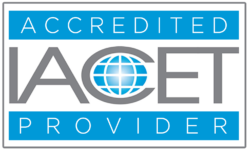March is reading month! Throughout the month on the IEE Blog, Jamie Klebe (one of our awesome Targeted Learning Coaches!) is providing a “Balcony View of Reading” to explore what really works in terms of reading. Throughout this series, Jamie will discuss different reading topics and provide tips and strategies you can use in your classroom.
Be sure to check out the earlier installments of this series:
A Balcony View of Reading, Part 1: Debunking 3 Myths on Independent Reading in the Classroom
A Balcony View of Reading, Part 2: 3 Essential Messages about Close and Critical Reading
Disciplinary Literacy – The What, Why, and How
It’s assessment season, and educators across Michigan are asking themselves, “How can I prepare my students for the new, more rigorous M-STEP?” This is a layered question. As testing begins in April, familiarizing your students with the interface and providing them with opportunities to experience the new style of questions are great ways to increase the comfort level of your students. However, taking the balcony view, it is imperative that we consider the instructional shifts necessary to truly prepare our students for the required stamina and for the depth of knowledge that it takes to succeed in the M-STEP era. Disciplinary Literacy is the key.
What is Disciplinary Literacy?
Disciplinary literacy can be defined as “the confluence of content knowledge, experiences, and skills merged with the ability to read, write, listen, speak, think critically and perform in a way that is meaningful within the context of a given field” (standards.dep.wi.gov). Although there are other definitions, I like this one because it emphasizes meaningful communication within a discipline. For example, take History. For many, History (as a class) evokes endless notes from lectures and textbooks. Yet, what do historians actually do? They engage in close reading of photographs, diaries, letters, newspapers, important documents, etc. They ask themselves questions like “Who wrote this? What is the author’s perspective? When did they write it? Why? Is it reliable? How might the circumstances in which the document was created affect its content? What do other documents say? Do they agree? What claims does the author make? What evidence does the author provide? How does the language indicate the author’s perspective?”
Historical reading skills fall into the following areas: sourcing, contextualization, corroboration, and close reading. Check out this “History Thinking Chart” and consider the relationship between Historical Thinking and the Common Core Standards for Reading in the Social Sciences. Essentially, the Common Core Standards for Reading in the Social Sciences guide teachers and students into this type of thinking.
Why Disciplinary Literacy?
The skills involved with Historical Thinking largely overlap with the skills students will need to succeed on the M-STEP. They are skills of communication: reading, writing, listening, and speaking. ELA teachers alone, in one hour per day, cannot prepare our students for the rigor of the new assessments. Students need the engagement of all subject areas. Science, also, has standards for literacy in the Common Core and these are embedded in the upcoming NGSS (Next Generation Science Standards). The design of our new standards requires that all disciplines participate. Again, I’m not talking about outdated ideas regarding Reading and Writing Across the Content Areas, where generic reading strategies were used across disciplines. No, we should neither read nor write poetry in Science class even if it’s about nature. That is not meaningful to the discipline. Disciplinary Literacy is about teaching thinking, whether that’s Scientific Thinking, Historical Thinking, Mathematical Thinking, etc. Each requires a different mindset. Sharing this responsibility is the only way forward.
How do we implement Disciplinary Literacy?
Professional learning is required. We cannot expect our History teachers to automatically know how to teach point of view, loaded language, claim/evidence. Many of our teachers were taught in the lecture, notes, textbook, and occasional movie cycle, and as a result, many of our teachers emulate what they know. It is imperative that Social Studies teachers are trained in Historical Thinking Skills and in finding resources to teach through a Disciplinary Literacy lens. The same is true for Science, Math, etc. Building teacher efficacy and craftsmanship is the way forward to making necessary instructional shifts, and thus, the way forward to increasing student achievement.
Resources
Doug Buehl’s book, Developing Readers in the Academic Disciplines. Also, get on the Google machine. He has resources available in many places.
Tim Shanahan. He’s one of the gurus.

